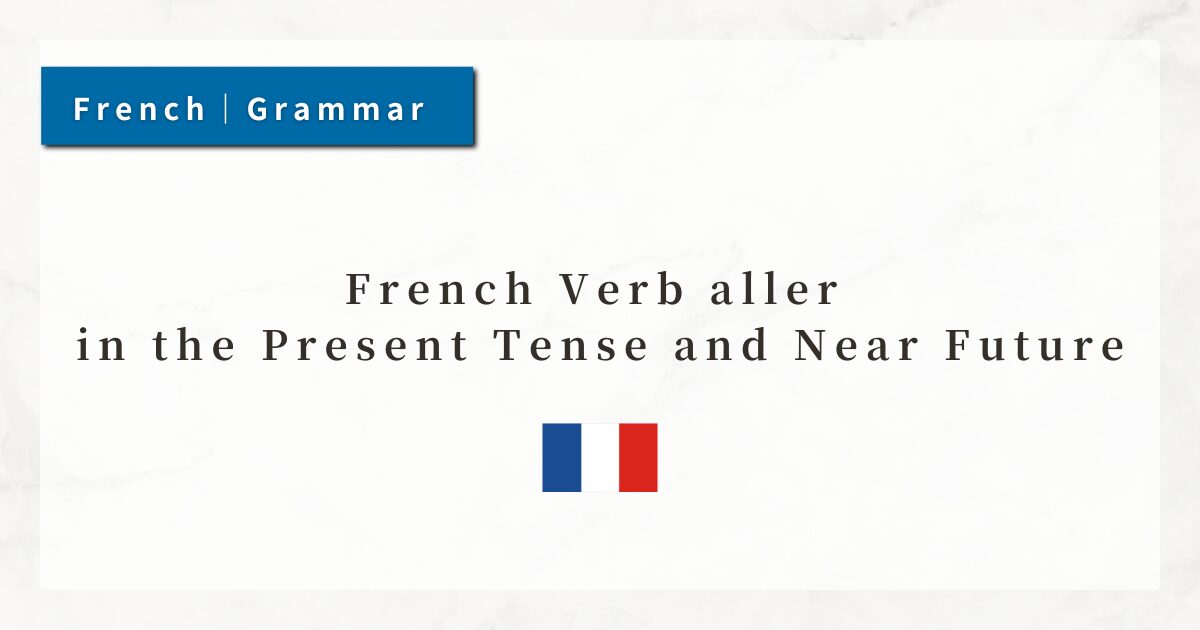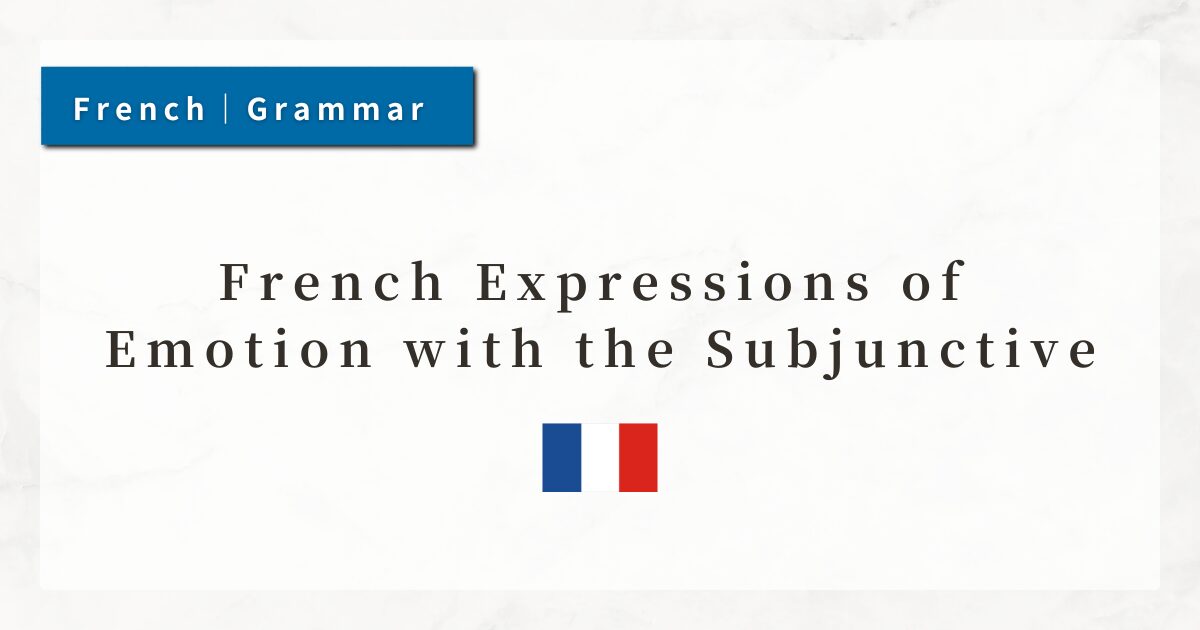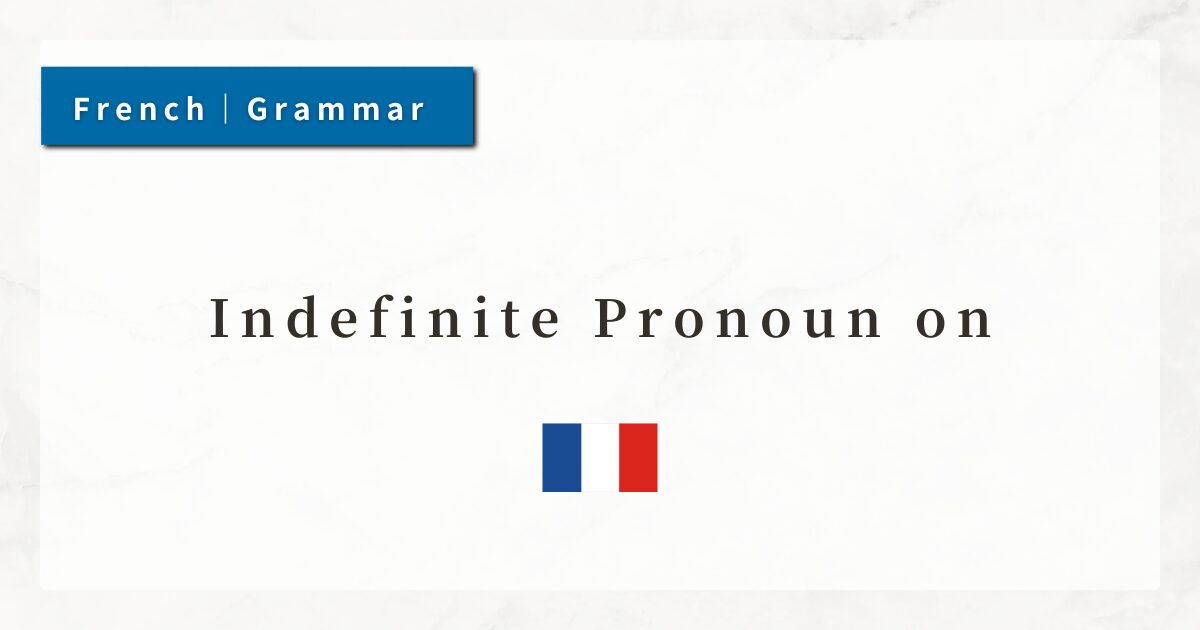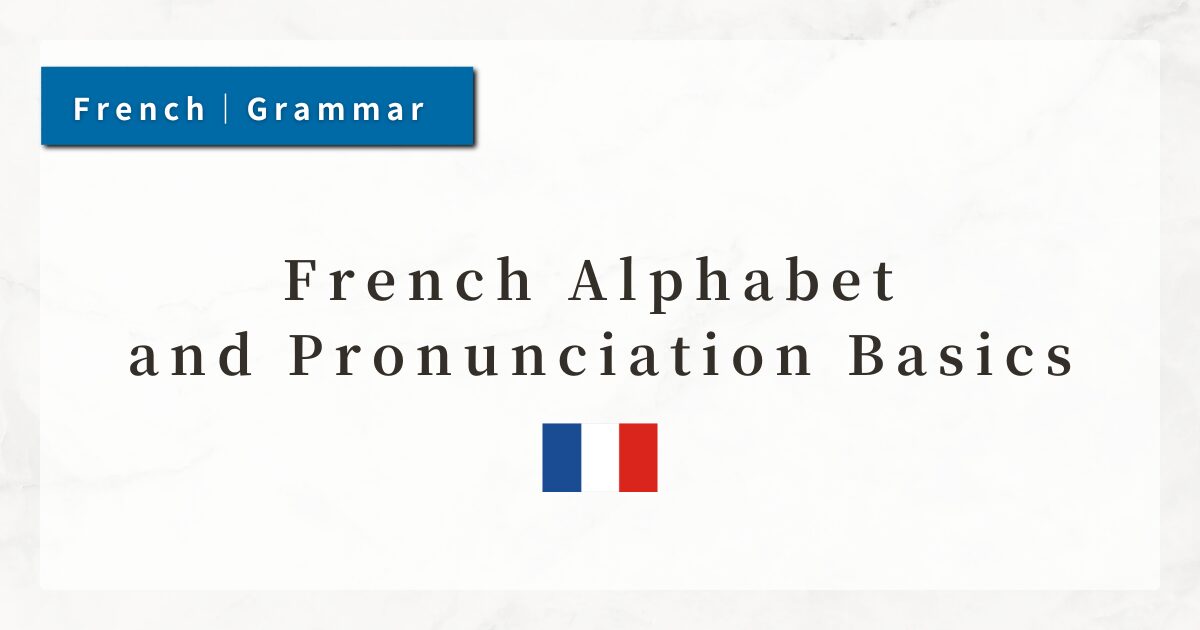#15 French Verb aller in the Present Tense and Near Future | Conjugation and Usage

The verb aller (“to go”) is one of the most fundamental verbs in French. While it is often used to indicate movement, its role is not limited to that.
By using the construction aller + infinitive, you can form the “near future” (futur proche), a very common way to express future actions in French.
In this lesson, I will explain the present tense conjugation of aller, its basic usage, and how the near future is formed and used.
1. The Present Tense of aller
Aller corresponds to the English verb go, meaning “to go” or “to move.”
In French, however, it also plays a crucial role in forming future expressions. Because it is an irregular verb, each conjugated form must be memorized individually.
Present Tense Conjugation of aller
| Subject | Conjugation |
|---|---|
| je | vais |
| tu | vas |
| il / elle / on | va |
| nous | allons |
| vous | allez |
| ils / elles | vont |
Unlike English go, the French verb aller changes significantly depending on the subject, so attention to detail is necessary.
2. Basic Usage of aller: Expressing Movement
The most basic meaning of aller in French is to indicate movement — “to go to a place.”
- Je vais à Paris.
(I am going to Paris.) - Elle va à la bibliothèque.
(She is going to the library.)
When aller is followed by “à + definite article,” contractions may occur.
3. What Are Contractions?
In French, the prepositions “à” and “de” contract when followed by the definite articles ”le” or “les.” This feature, unique to French, exists to ensure smoother pronunciation.
Because “aller” frequently occurs with “à + definite article + noun” to indicate destinations, it is essential to understand these contraction rules.
3-1. Contraction Rules with à
| Preposition + Article | Contracted Form | Example | Translation |
|---|---|---|---|
| à + le (masc. sing.) | au | Je vais au marché. | I am going to the market. |
| à + les (plural) | aux | Nous allons aux musées. | We are going to the museums. |
| à + la (fem. sing.) | à la | Tu vas à la banque. | You are going to the bank. |
| à + l’ (before vowel or silent h) | à l’ | Elle va à l’école. | She is going to school. |
- Contraction occurs only with à + le and à + les.
- With feminine singular nouns (à la), no contraction occurs.
- With no article, or with indefinite articles (un, une, des), no contraction occurs.
- Before a vowel or silent h, à l’ is used.
3-2. Contractions with de (Reference)
The preposition “de ”(of, from) follows the same rules. Although it is not directly related to “aller, ”here is a brief overview:
| Preposition + Article | Contracted Form | Example | Translation |
|---|---|---|---|
| de + le | du | C’est la clé du bureau. | That is the key to the office. |
| de + les | des | Le livre des enfants. | The children’s book. |
| de + la | de la | Le prix de la maison. | The price of the house. |
| de + l’ | de l’ | Le professeur de l’école. | The teacher of the school. |
4. The Near Future: Expressing Upcoming Plans
The near future (futur proche) is used to talk about actions or events that are about to happen.
- Subject + aller (present tense) + infinitive
This construction is very similar to English be going to.
| Subject | aller (present) | Infinitive | Example |
|---|---|---|---|
| Je | vais | partir | Je vais partir. (I am going to leave.) |
| Tu | vas | étudier | Tu vas étudier. (You are going to study.) |
| Il | va | manger | Il va manger. (He is going to eat.) |
| Nous | allons | voyager | Nous allons voyager. (We are going to travel.) |
| Vous | allez | acheter | Vous allez acheter. (You are going to buy.) |
| Ils | vont | visiter | Ils vont visiter. (They are going to visit.) |
5. Meaning and Features of the Near Future
The near future conveys three main nuances:
5-1. Fixed Plans in the Near Future
It expresses scheduled actions that will happen soon (today, tomorrow, in the immediate future).
- Je vais voir un médecin cet après-midi.
(I am going to see a doctor this afternoon.)
5-2. Intention or Plan of the Speaker
It shows an action the speaker has already decided to carry out.
- Elle va commencer son nouveau travail lundi.
(She is going to start her new job on Monday.)
5-3. Prediction or Certainty
It expresses the speaker’s strong belief about something about to happen.
- Il va pleuvoir ce soir.
(It is going to rain this evening.)
The near future is used when the speaker has a concrete image or plan regarding the future.
6. Negation and Questions in the Near Future
6-1. Negation
- Subject + ne + aller (present) + pas + infinitive
The “ne … pas” surrounds “aller,” not the infinitive.
- Je ne vais pas partir.
(I am not going to leave.) - Nous n’allons pas manger.
(We are not going to eat.)
6-2. Yes/No Questions with Est-ce que
- Est-ce que + subject + aller (present) + infinitive
- Est-ce que tu vas partir ?
(Are you going to leave?) - Est-ce que nous allons visiter Paris ?
(Are we going to visit Paris?)
6-3. Inverted Questions
- aller (present) – subject + infinitive
- Vas-tu venir ?
(Are you going to come?) - Vont-ils commencer ?
(Are they going to begin?)
Inverted questions are more formal and are mainly used in writing or formal speech.
7. Summary
- Aller is an irregular verb meaning “to go,” with unique present tense conjugations.
- The construction “aller + infinitive” forms the near future (futur proche), which expresses upcoming or intended actions.
- The near future is widely used in everyday conversation as a natural way to talk about future events.
- Pay attention to contractions with “à” and definite articles (au, aux).




